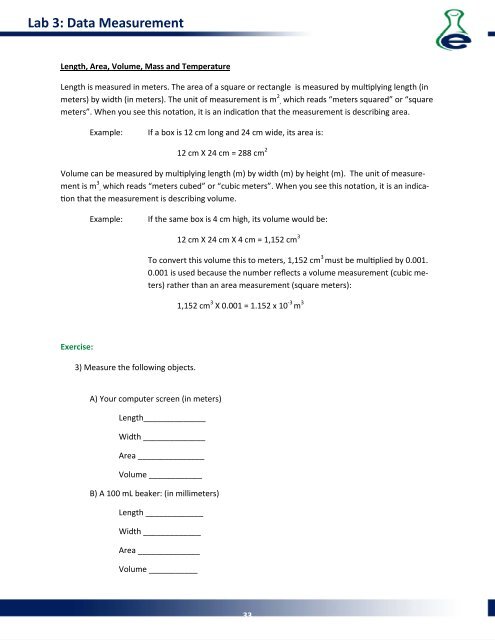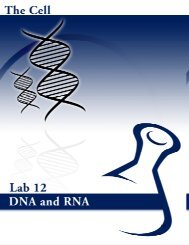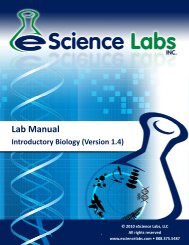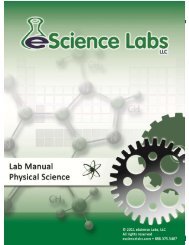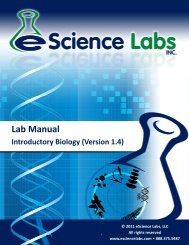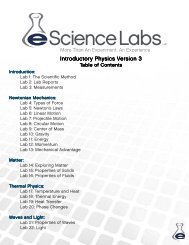Lab Manual - eScience Labs
Lab Manual - eScience Labs
Lab Manual - eScience Labs
Create successful ePaper yourself
Turn your PDF publications into a flip-book with our unique Google optimized e-Paper software.
<strong>Lab</strong> 3: Data Measurement<br />
Length, Area, Volume, Mass and Temperature<br />
Length is measured in meters. The area of a square or rectangle is measured by mulplying length (in<br />
meters) by width (in meters). The unit of measurement is m 2 , which reads “meters squared” or “square<br />
meters”. When you see this notaon, it is an indicaon that the measurement is describing area.<br />
Example:<br />
If a box is 12 cm long and 24 cm wide, its area is:<br />
12 cm X 24 cm = 288 cm 2<br />
Volume can be measured by mulplying length (m) by width (m) by height (m). The unit of measurement<br />
is m 3 , which reads “meters cubed” or “cubic meters”. When you see this notaon, it is an indica-<br />
on that the measurement is describing volume.<br />
Example:<br />
If the same box is 4 cm high, its volume would be:<br />
12 cm X 24 cm X 4 cm = 1,152 cm 3<br />
To convert this volume this to meters, 1,152 cm 3 must be mulplied by 0.001.<br />
0.001 is used because the number reflects a volume measurement (cubic meters)<br />
rather than an area measurement (square meters):<br />
1,152 cm 3 X 0.001 = 1.152 x 10 -3 m 3<br />
Exercise:<br />
3) Measure the following objects.<br />
A) Your computer screen (in meters)<br />
Length______________<br />
Width ______________<br />
Area _______________<br />
Volume ____________<br />
B) A 100 mL beaker: (in millimeters)<br />
Length _____________<br />
Width _____________<br />
Area ______________<br />
Volume ___________<br />
33


